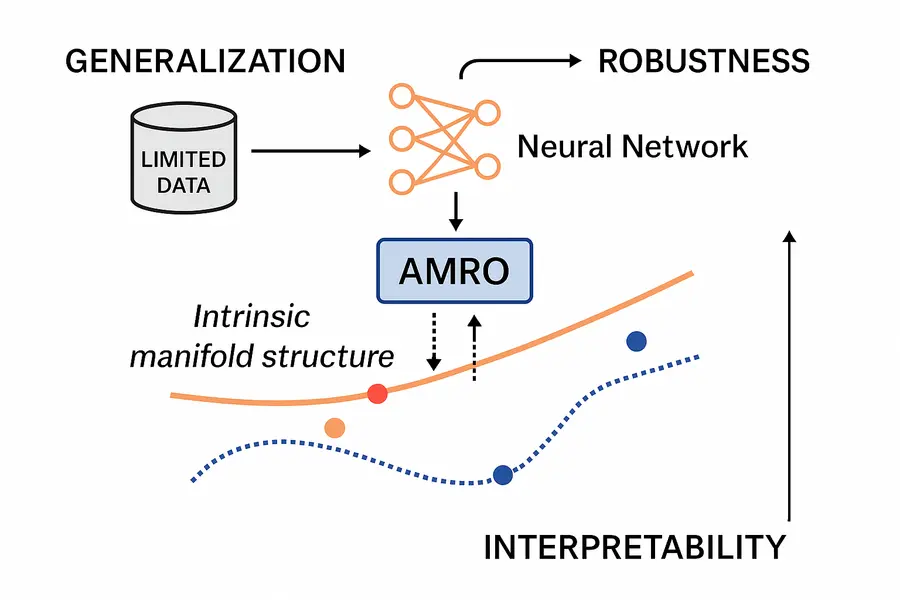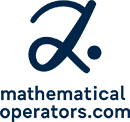AMRO
What Is AMRO?
The Adaptive Manifold Regularization Operator (AMRO) is a novel mathematical tool designed to improve how artificial intelligence systems learn from limited data. By guiding neural networks to respect the natural structure of the data they are trained on, AMRO helps models become more robust, generalizable, and interpretable.
When Is AMRO Useful?
AMRO is especially powerful in situations where:
- Your model must generalize from small or unbalanced datasets
- There's risk of distribution shift between training and deployment environments
- You want extra protection against adversarial inputs or noisy data
- nterpretability is crucial—for example in healthcare, autonomous systems, or finance
Example domains include:
- Few-shot learning in computer vision
- Medical diagnostics with limited training samples
- Edge-case detection in autonomous vehicles
- Semantic robustness in natural language processing
Key Benefits of AMRO
Improved Generalization
Helps models learn more from fewer examples by aligning training with the underlying geometry of the data.
Increased Robustness
⦁ Enhances stability against input perturbations, unseen data, or adversarial attacks.
Better Interpretability
Encourages clean, structure-respecting internal representations that are easier to analyze and trust.
Model-Agnostic Integration
Works with most modern neural architectures as an add-on to existing training objectives.
How AMRO Works (Conceptually)
At its core, AMRO encourages AI models to learn in a way that respects the shape of the data manifold—the hidden structure that real-world data tends to follow.
It does this by:
- Measuring distances not just between raw data points, but between their learned geometric representations
- Applying a regularization force that pulls similar representations closer together—but only when they lie on the same underlying structure
- Doing all of this adaptively, meaning it responds dynamically to how the model is learning during training
This approach helps the model distinguish meaningful variation from noise—without requiring extra data or labels.
🛡️ Importantly, the internal mechanism is abstracted in a way that makes reverse engineering practically infeasible. No access to internal weights or model parameters is exposed.
Use AMRO to Future-Proof Your AI
As AI systems are deployed in more sensitive and unpredictable environments, techniques like AMRO will be essential. They allow you to build smarter, safer, and more trustworthy AI—without sacrificing performance.
Interested in exploring how AMRO can support your project?
📩 Contact: info (at) mathematicaloperators.com
The diagram shows how AMRO (Adaptive Manifold Regularization Operator) enhances a neural network’s training by aligning it with the intrinsic manifold structure of the data — especially under limited data conditions. In machine learning, a manifold refers to the underlying geometric shape or structure that data naturally forms in high-dimensional space. Even though raw data (like images, sensor readings, or text embeddings) may have thousands of dimensions, the actual variation often lies along much lower-dimensional, curved surfaces—called manifolds. These manifolds capture the essential patterns or modes of variation in the data. By ensuring that the neural network respects and learns this structure, AMRO helps the model generalize better, resist overfitting, and form more meaningful internal representations, even when data is scarce or noisy

